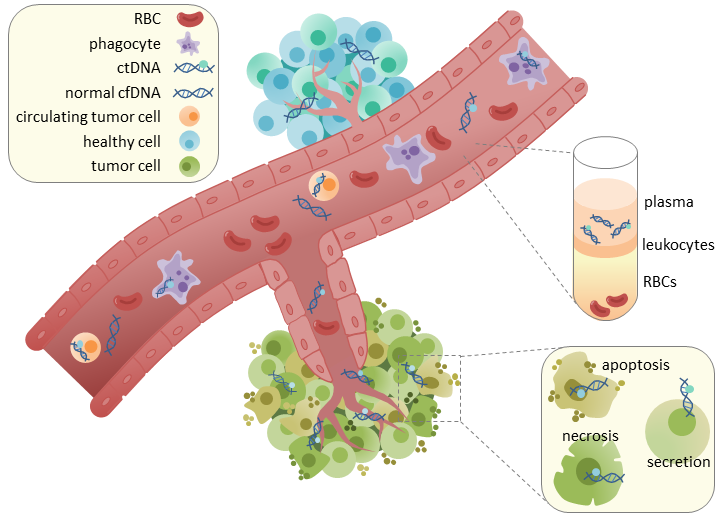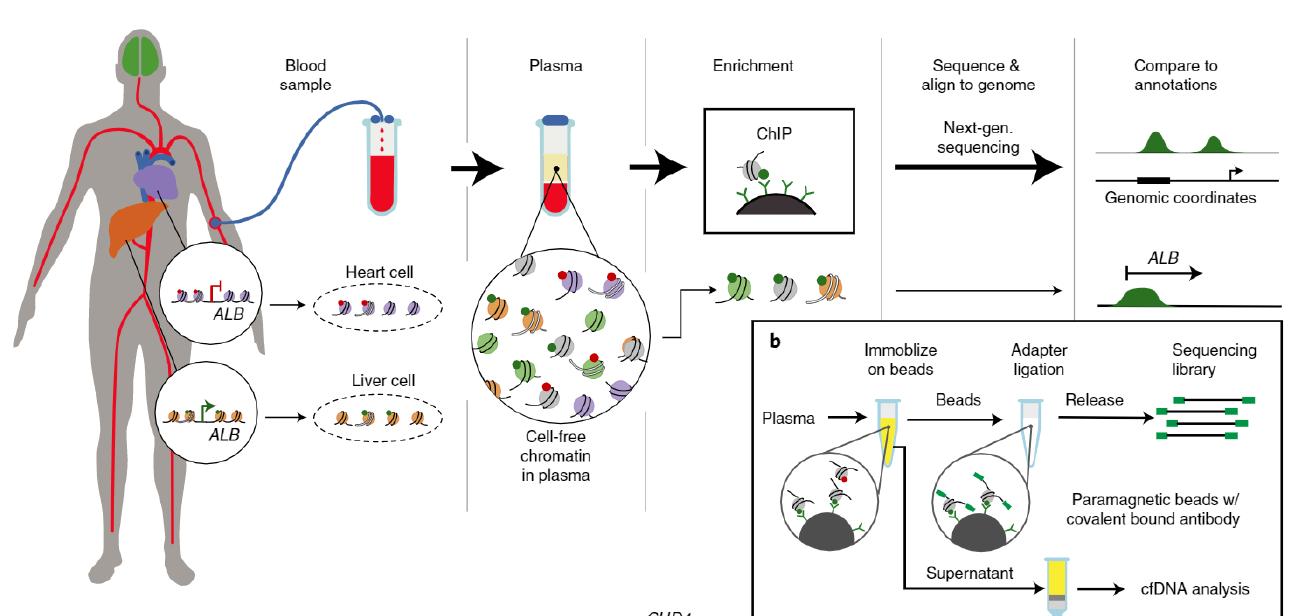2021-03-01 By Quick Biology
Liquid biopsy cell-free DNA (cfDNA) in human plasma provides access to molecular information about the pathological processes in individuals. cfDNA analysis is widely used for assessment of fetus chromosomal aberrations, graft rejection, monitoring tumor dynamics and targeted treatment (i.e, circulating tumor DNA) (Fig1. From Wikipedia).
CfDNA originates from pathogenic or healthy organisms, the precise mechanism of cfDNA release is unclear. Upon cell death, the genome is fragmented into nucleosome-complex sizes (~150bp, ~300 bp, ~450 bp, about 150bp per Unit size). In Nature Biotechnology, Dr. Friedman reasoned that these fragmented cfDNAs carrying histone modifications from their origins might inform on DNA-related activities, including transcription, within the cells of origin (Fig2, ref1).
In their study, they performed chromatin immunoprecipitation and sequencing of cell-free nucleosomes directly from human plasma, they called cfChIP-seq. To overcome extremely low concentration of cf-nucleosomes and high concentration of native antibodies in plasma, they covalently immobilized ChIP antibodies to paramagnetic beads, incubated conjugated beads directly in plasma, and did on-bead adaptor ligation. By analyzing 268 human plasma samples compared to roadmap epigenomics atlas, tumor type gene signatures in TCGA and GTEx dataset, they show the cfChIP-seq recapitulates the original genomic distribution of modifications associated with transcriptional activities. cfChIP-seq can detect cfDNA cell of origin. In patients with a range of liver diseases, they identify pathology-related changes in hepatocyte transcriptional programs. In patients with metastatic colorectal carcinoma, they detect clinically relevant and patient-specific information, including transcriptionally active human epidermal growth factor receptor 2 (HER2) amplification. Altogether, cfChIP-seq, using low sequencing depth, provides systemic and genome-wide information and can inform diagnosis and facilitate interrogation of physiological and pathological processes using blood samples.
Figure 1: cfDNA or ctDNA in the bloodstream. (from Wikipedia: https://en.wikipedia.org/wiki/Circulating_tumor_DNA)

Figure 2: cfChIP-seq method outline.

Quick Biology can assist you with cfDNA-seq and ChIP-seq. Find More at Quick Biology.
See resource:
1. Sadeh, R. et al. ChIP-seq of plasma cell-free nucleosomes identifies gene expression programs of the cells of origin. Nature Biotechnology (2021). doi:10.1038/s41587-020-00775-6



